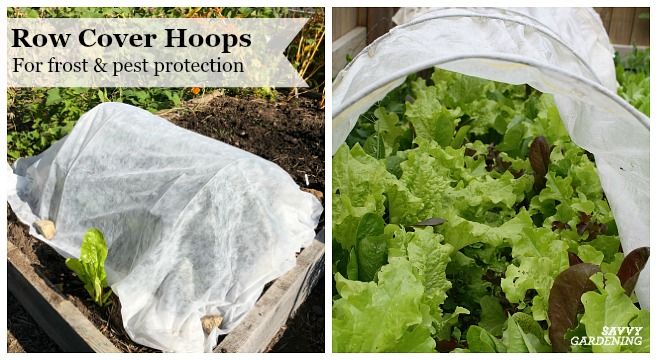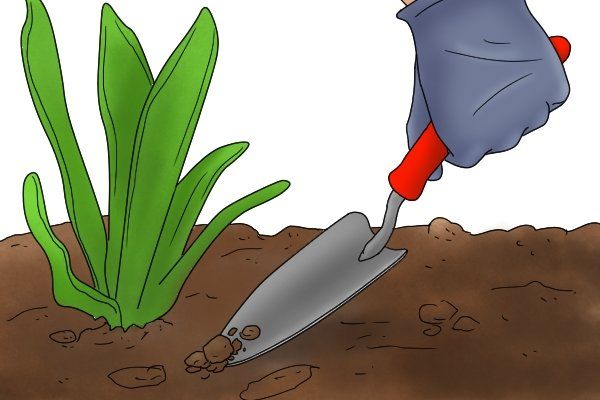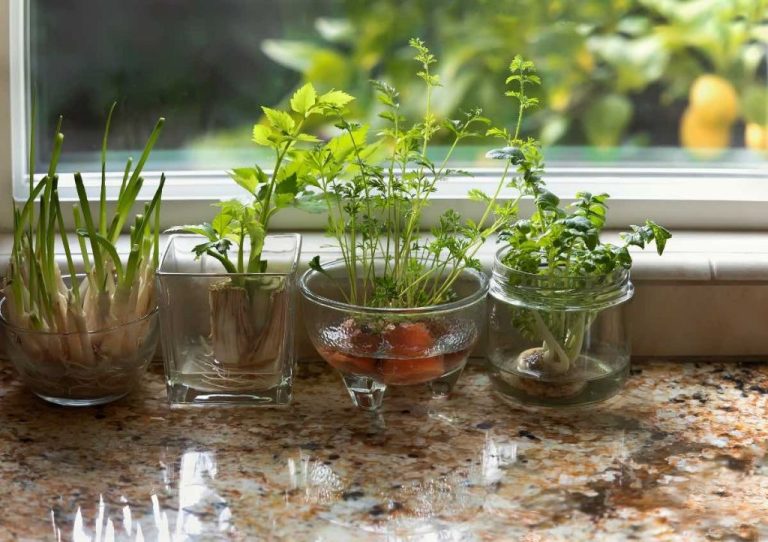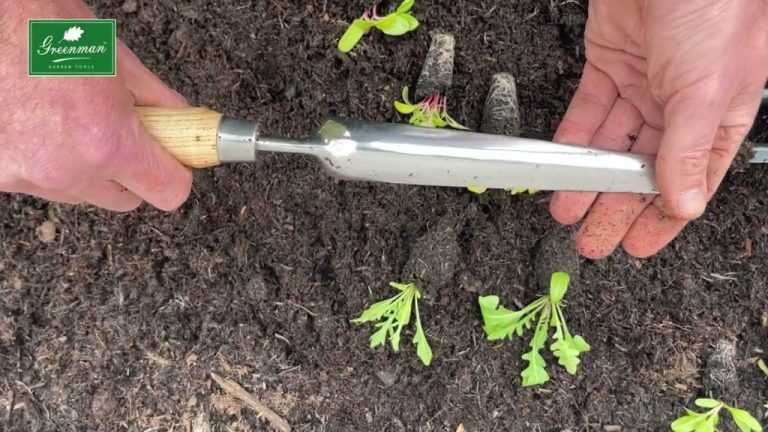Beginner’S Guide To Winter Gardening: Tips For Cold-Weather Success
Winter gardening refers to growing plants during the colder months of the year. It offers unique benefits and challenges compared to gardening in spring, summer, and fall. The colder temperatures slow plant growth, but the dormant period allows the soil to rest and rejuvenate. Winter is an ideal time to start planning and preparing for the next growing season.
This beginner’s guide will provide tips and techniques for cold weather gardening success. Topics covered include choosing appropriate crops, starting plants indoors, utilizing cold frames and row covers, improving soil, watering, controlling pests, harvesting, and enjoying the rewards of winter gardening. With proper planning and preparation, it is possible to have a productive vegetable garden despite cold temperatures and frost.
Choose Appropriate Crops
Certain crops are well-suited for growing during the colder winter months. Focus on quick-maturing greens and root vegetables that can tolerate frosts and light freezes. Some good options include:
- Leafy greens like spinach, kale, Swiss chard, lettuce
- Root vegetables like carrots, beets, turnips, potatoes, radishes
- Peas, broccoli, cabbage, cauliflower
- Onions and garlic
When selecting seed varieties, look for ones with 60-70 days to maturity or less. Quick-maturing greens like spinach and lettuce can be ready in as little as 30-45 days. You can often get multiple successive harvests from plants like kale and Swiss chard as well. Just be sure to choose vegetable types that are suited for your winter growing zone.
For recommendations on winter crops for your specific region, see this guide.
Start Plants Indoors
For most winter crops, you’ll need to start seeds indoors 4-8 weeks before the last expected frost. This gives seedlings time to germinate and grow to a hardy size before being transplanted outside in the garden. To start seeds indoors, you’ll need:
- Seed starting mix or potting soil
- Containers like seed trays or starter pots
- A bright, sunny spot or grow lights
- Small labels to mark each seed variety
- A spray bottle to keep soil moist
Fill containers with potting mix, plant seeds according to package directions, lightly water, and place in a sunny spot or under grow lights. Keep the soil moist until seeds germinate. Once seedlings emerge, continue providing ample light and water as needed until they are ready to be hardened off and transplanted outdoors after the danger of frost has passed. Starting plants indoors gives you a head start on the growing season!
Use Cold Frames
Cold frames are small enclosed garden structures with a transparent top, usually made of glass or plastic, that harness the sun’s warmth to create a protected space for plants. They provide warmth needed for plants to thrive and extend the growing season in cooler weather (1).
Some key benefits of using cold frames for winter gardening include:
- Allowing plants to grow 2-4 weeks earlier in spring and 2-8 weeks later into fall compared to gardening outdoors (2).
- Protecting seedlings and crops from cold weather damage.
- Creating optimal temperatures for seed germination and plant growth.
- Allowing for a longer harvest of cold-tolerant vegetables like spinach, lettuce and kale.
When constructing a basic cold frame, face the structure south to maximize light exposure. Build the back wall higher to allow more sun in winter when light levels are low. Use insulation, straw bales or soil around the sides for added insulation. Hinge the top lid for ventilation to prevent overheating on sunny days. Locate the cold frame near a water source for convenient irrigation (1).
With a proper cold frame setup and careful crop selection, gardeners can reap continued rewards from their landscape even when the weather turns cold.
Utilize Row Covers
Row covers are a simple yet highly effective tool for winter gardening success. They create a protective microclimate around your plants, shielding them from cold winds and frost. Row covers come in a few main types:
- Floating row covers made of spun polyester or polypropylene fabric allow air, light, and water through while protecting against up to 8 degrees Fahrenheit of frost. They can be laid directly over plants and anchored with stones, boards, or metal pins. Floating row covers are lightweight and easy to install.
- Low tunnels are made by supporting floating row cover fabric over hoops. They allow ventilation while providing greater warming and protection from wind and frost.
- Plastic tunnels completely enclose a row or raised bed to create a greenhouse-like environment. Slitted plastic lets in air and moisture while keeping in heat.

The main benefits of using row covers include boosting temperatures around plants by 2-8°F, extending the growing season, protecting from frost and wind damage, and keeping pests off plants. They allow light and rainfall to still reach plants. Row covers can help tender crops like lettuce, spinach and kale survive cold snaps with minimal bolting or decline in quality. Be sure to allow adequate ventilation during warmer sunny periods to prevent overheating.
When using row covers, seal the edges with soil or rocks to trap heat. Check that corners remain anchored during windy conditions. Lift covers temporarily as needed on warm days, and remove them once the weather warms in spring. With proper use, row covers are an inexpensive way to safely continue gardening through the winter.
Improve Soil
Proper soil preparation is crucial for winter gardening success. The soil needs to retain warmth and moisture to keep plants happy through cold temperatures and frost. Work compost and organic matter into garden beds in fall to improve drainage and nutrient content. Compost provides a slow-release fertilizer to nourish plants over winter. Well-rotted manure, leaf mold, peat moss, coco coir, or composted wood chips are other excellent soil amendments.
Test soil pH and add lime in fall if needed, as it takes time to alter pH. Rake beds thoroughly to break up clumps. Mulch helps insulate soil and reduce freeze/thaw cycles. Apply 2-4 inches of mulch like straw, leaves, wood chips, or pine needles after first frost. Stop high-nitrogen fertilizers in fall but use low-nitrogen, phosphorous-rich organic fertilizers to promote root growth and strengthen plants. Bone meal, rock phosphate, kelp meal, and blood meal are good options.
Read more winter soil tips from https://northernhomestead.com/preparing-the-garden-for-winter/.
Water and Irrigate
Plants still need water during the winter, but less frequently than in warm weather. It’s important to water on warmer winter days when the soil thaws, about once every 7-10 days depending on your climate (source: https://www.dripworks.com/blog/winter-gardening-tips-and-specifics). Watering less frequently encourages deeper root growth. Focus water at the base of plants and avoid wetting foliage, which can promote disease in cold temps.
To prevent soil from freezing solid, add 2-3 inches of mulch around plants. Organic mulches like bark chips insulate the soil and help retain moisture. You can also use floating row covers or low tunnels to trap warmth around plants (source: https://smartpots.com/tips-winter-watering/).
Consider setting up drip irrigation or soaker hoses to water garden beds efficiently. Drip irrigation applies water slowly and directly to soil. Programmable timers allow automation on warmer days. Drain and store above-ground irrigation before deep freezes.
Control Pests
Even during the cold winter months, pests can still plague the garden. Some of the most common winter garden pests include aphids, cabbage worms, slugs, and mice. Organic prevention and treatment methods are key for dealing with these troublesome critters.
Aphids tend to hide in bark crevices and among fallen leaves during winter (Source). Spray plants with a strong jet of water to knock them off. Introduce ladybugs and lacewings, natural predators of aphids. Cabbage worms can decimate crops like kale or broccoli. Cover susceptible plants with floating row covers. Apply Bacillus thuringiensis (Bt), a natural microbial pesticide.
Slugs thrive in cool, wet conditions. Set out beer traps or lay abrasive diatomaceous earth around plants. Mice are attracted to mulch and fallen vegetation. Deter them by eliminating hiding spots, sealing entry points, and using humane traps (Source). Being vigilant and addressing infestations early using organic measures can help keep pests at bay.
Harvest Successfully
Winter crops require careful harvesting considerations due to cold temperatures. Leafy greens like spinach and lettuce are best harvested in the morning after any frost has melted but while it is still cool. This prevents the leaves from wilting. Use a sharp knife to cut outer leaves rather than pulling and tearing the plants to prevent damage. Root crops like carrots, beets and turnips need extra care when harvesting in frozen soil. Gently loosen the soil with a digging fork, taking care not to pierce the vegetables. Harvest them using a shovel or trowel. Allow any excess soil to remain on the roots until you bring them indoors to prevent damage. Wear gloves to protect your hands from the cold. Harvest winter crops promptly once mature and do not leave them sitting in the garden exposed to cold temperatures and pests. Storing crops properly indoors will help preserve their freshness.https://savvygardening.com/vegetables-to-grow-in-winter/
Enjoy the Rewards
One of the best parts about winter gardening is getting to reap the rewards of your efforts. After putting in time and care to grow hardy crops through the cold months, you’ll have fresh produce to enjoy. Winter gardening allows you to harvest tasty greens, root vegetables, and more straight from your own backyard, even when there’s snow on the ground.
There’s a great sense of satisfaction and accomplishment that comes from successfully nurturing plants through harsh weather. Seeing your crops thrive and producing despite the cold provides a wonderful feeling of joy.
On top of that, winter gardening provides light exercise and a reason to get outdoors during the shorter days when people tend to stay inside. Taking time to tend to your winter garden can be a peaceful, rewarding experience that boosts your mood.
So embrace the chance to grow cold-hardy plants and you’ll discover all the wonderful benefits winter gardening has to offer. You’ll get to pick fresh vegetables, feel a sense of achievement, and find motivation to get moving outdoors.






